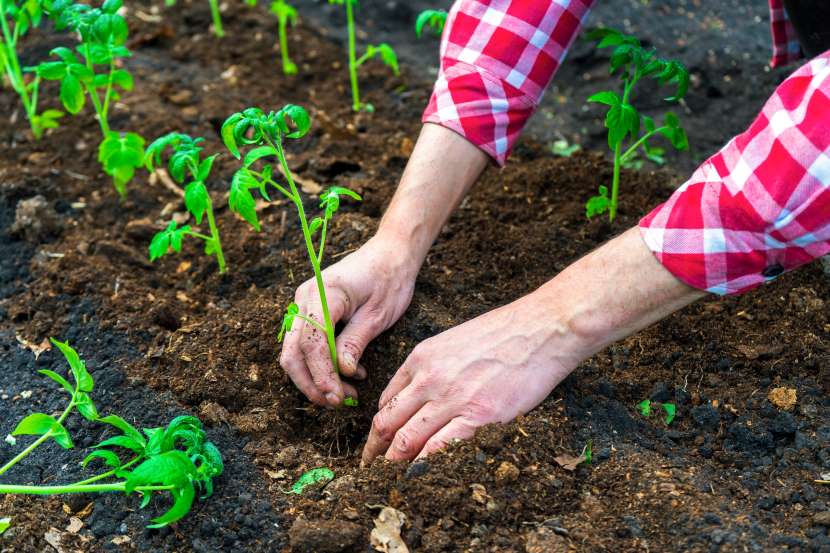
Tomato (Lycopersicon esculentum L.) is considered one of the most important horticultural crops worldwide, while in Greece table tomato is the second most important crop after potato. It has been estimated that in outdoor cultivation it reaches yields of up to 6 tons/stremmas, while in greenhouse – hydroponic cultivation it can reach yields of more than 10 tons/stremmas.
Tomatoes are a crop with high nutritional requirements, the balanced satisfaction of which is a necessary condition for achieving high yields and good quality production, combined with a long fruiting period. It is a particularly potassium-happy species, with a beneficial effect of potassium (K) on fruit quality. In general, it requires a stable nutrient supply, the utilisation of which is based on regular irrigation and sufficient soil moisture.
At the critical stages of growth (flowering, pollination, germination, fruit setting), in addition to the main macronutrients, it is recommended to apply both trace elements (Boron, Manganese, Zinc, Copper, Molybdenum, Iron) and biostimulants (protein hydrolysis products – Amino acids, Algae extracts, etc.). Applications made at the appropriate stage of development, with the right composition and quantity, give excellent results.
The use of Biostimulants – Growth Regulators in agricultural practice, affects a number of plant physiological processes, such as the more effective uptake of nutrients, the improvement of plant response to biotic and abiotic stresses, the development of the root system and the quantitative and qualitative improvement of the products produced.
The current academic understanding of how algal extracts, fulvic acids and amino acids affect the reduction of abiotic and biotic stress is based on the analysis of a complex network of molecular signals, activation of biochemical and physiological processes. At the cellular level, induced compounds such as proline, glycine and betaine stabilize proteins and cell structures, maintaining stable cellular water potential and absorbing free oxygen species (ROs).
According to various studies, plants to which biostimulants – growth regulators were applied showed additional:
- Increased photosynthetic activity (expression of genes related to the Rubisco process).
- Increased content of macronutrients and micronutrients.
- Induction of biosynthesis of cytokinins (CKs) and auxins (IAA) growth hormones, acting antagonistically to stress hormones.
At the same time, soil pH is one of the key factors affecting plant growth, as well as the availability and assimilation of nutrients. Therefore, maintaining the pH at the desired values is one of the primary objectives of any rational fertilisation programme.
The availability of micronutrients in the root system of plants is influenced by a number of factors. Certain micronutrients are more difficult to assimilate under unfavourable conditions. Iron is the most common example. The use of the innovative chelating agent EDDHMA makes Iron available in a wide pH range (5-10), thus preventing the undesirable consequences of Iron deficiency.
For Phytothreptiki S.A., innovation is a fundamental feature of its identity, developing products with technological advantage.

The fertilizers of the BEST series, PGH technology, are the result of Phytothreptiki’s effort to develop a water-soluble fertilizer that meets the “All in One” characterization.
High solubility, increased availability of nutrients, low pH, presence of Bio-stimulants – Growth Regulators & Iron in the form of EDDHMA, are some of the special characteristics of BEST series.
The BEST series of water-soluble fertilizers of PGH technology, are available in a variety of formulations to meet the fertilizer requirements of all crops, at all stages of their growth. They are applied both by the hydrofertilisation method and by the inter-foliar fertilisation method.
At the same time, the specialized selection of raw materials results in BEST fertilizers being low in salinity, which makes them an ideal solution for soils with high electrical conductivity.

